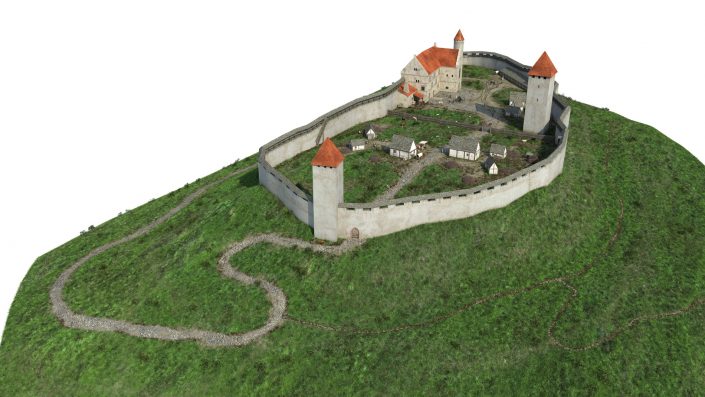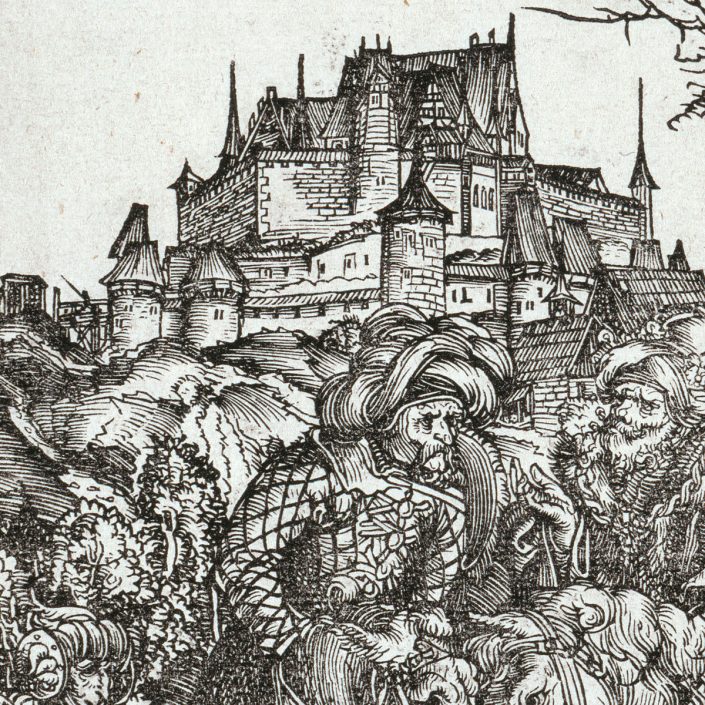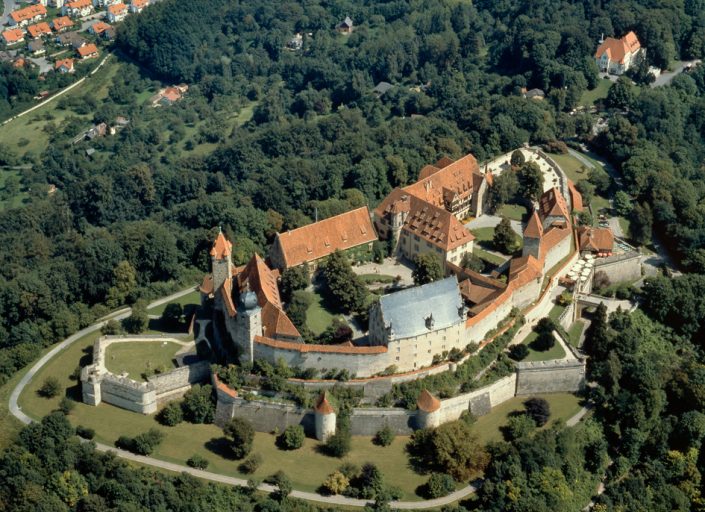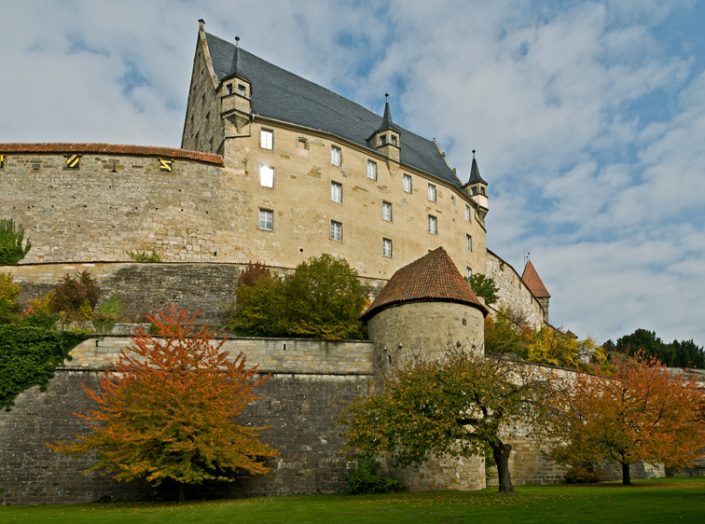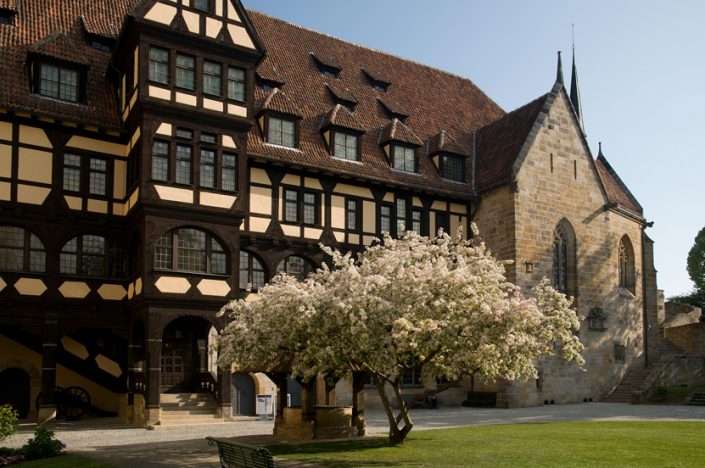From Castle to Fortress
The first mention of “Koburk” dates back to the year 1056, the lands and goods of Coburg eventually coming into the possession of the Benedictines in Saalfeld. In the year 1060, there is mention of a chapel of St. Peter and Paul, while in 1075, reference is made to the “monasterio … Choburgk” and seat of a Vogt (state functionary representing ecclesiastical dignitaries).
The designation “sloss” in a deed dating from 1225, as well as the rustication and the stone-mason marks dating from the same period, bear witness to the transformation of the monastery into a castle. One of the oldest parts of the edifice is the “Blue Tower” which still exists today.
In the fifteenth century, the Veste underwent further extension and fortification and was partly rebuilt following a fire in 1499/1500. This is when the Veste enjoy its heyday as the palace of the Electors of Saxony.
When the rulers’ residence was transferred to the palace of Ehrenburg in the town, the castle was turned into a regional fortress. In 1531, Kunz Krebs constructed a large cistern and a short while later, the Hohe Bastei, or “High Bastion” was built.
In the mid-sixteenth century, the master-mason Nikolaus Grohmann built the vaulted cellar, part of which is on two levels, and an access by tunnel running through the north-western corner of the outer fortifications.
In 1614, the master-mason Gideon Bacher, who specialised in fortifications, designed the last major military features to be built at the Veste in the shape of a series of bastions: the “Bärenbastei”, “Rautenkranz” and “Bunter Löwe”.
In 1632, the Veste was unsuccessfully besieged by Wallenstein, but taken by ruse by Swedish troops in 1635.
In the eighteenth century, the military importance of the Veste waned. In 1782, the former arsenal, the “Hohes Haus”, was transformed into a prison and in 1802 the troops which were stationed at the fortress were withdrawn.
Starting in 1838, Duke Ernst I undertook alterations at the Veste to plans by the famous Nuremberg architect Karl Alexander von Heideloff inspired by ideas of German mediaeval castles and chivalry. This involved huge changes to its outward aspect.
The last reigning duke, Carl Eduard of Saxe-Coburg and Gotha (1884-1954) had Heideloff’s additions removed by the Berlin-based architect and castle expert Bodo Ebhardt, whom he commissioned to carry out fresh restoration work. He restored the castle to what was at that time viewed as its original historical state and turned the ducal palace into living apartments for the duke’s family.
The Veste Coburg has…
Castle surface
Roof surfaces
Stairs
Windows
Loopholes


